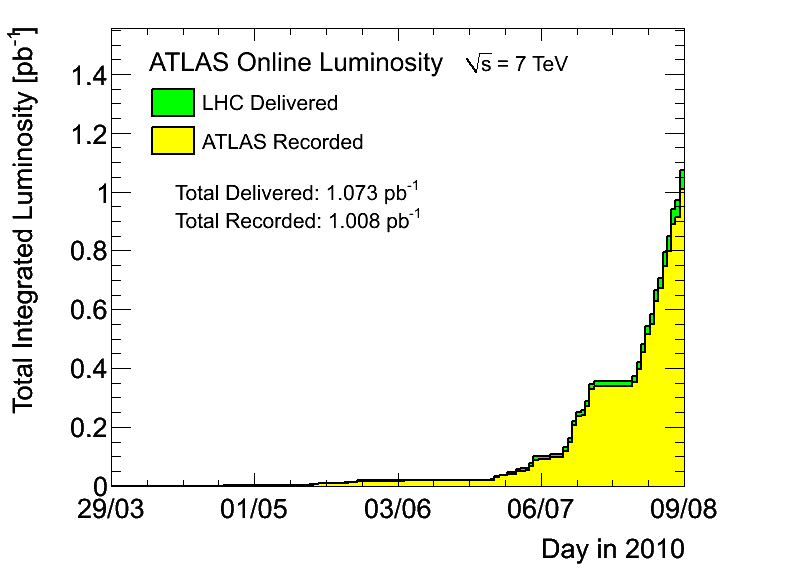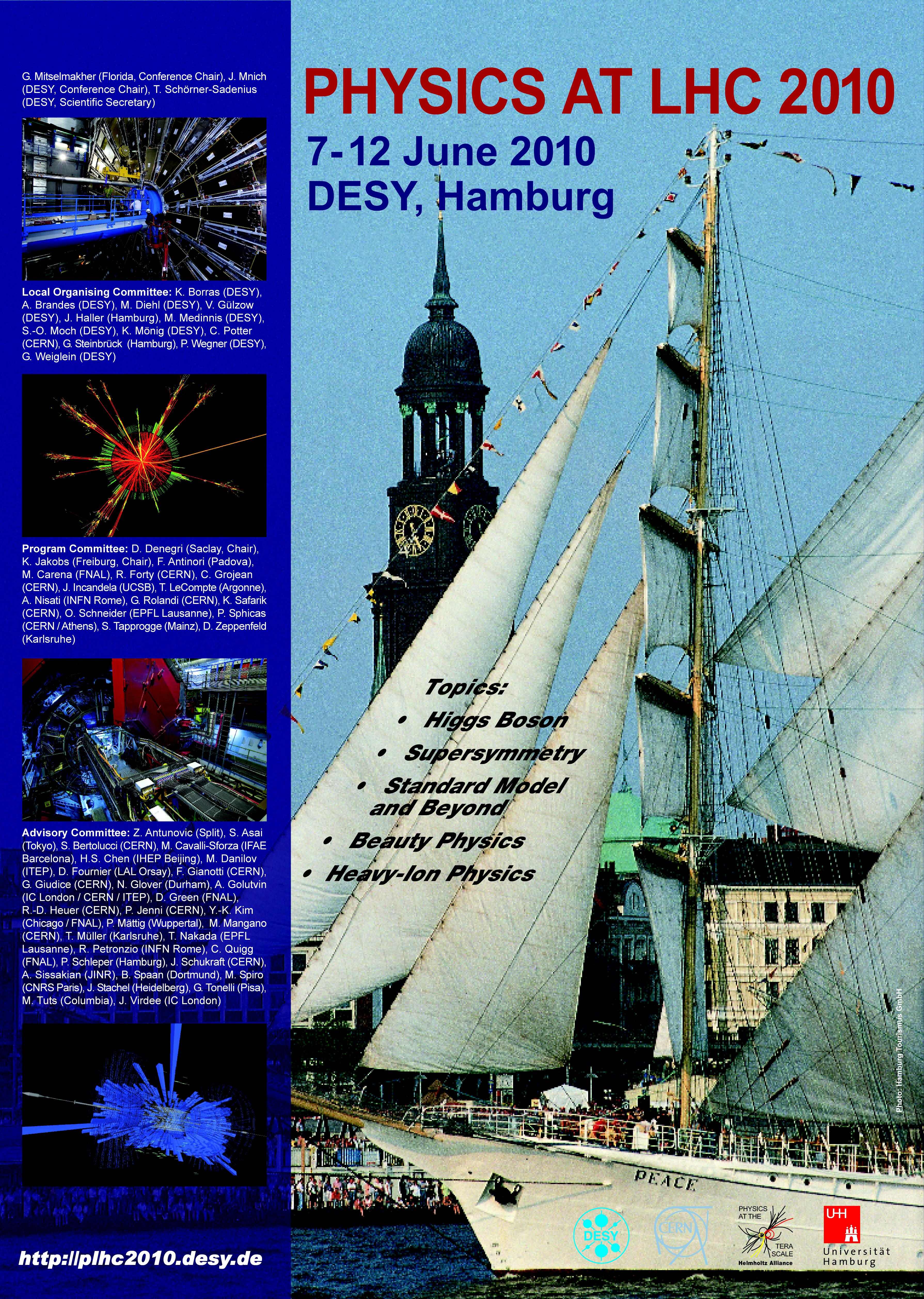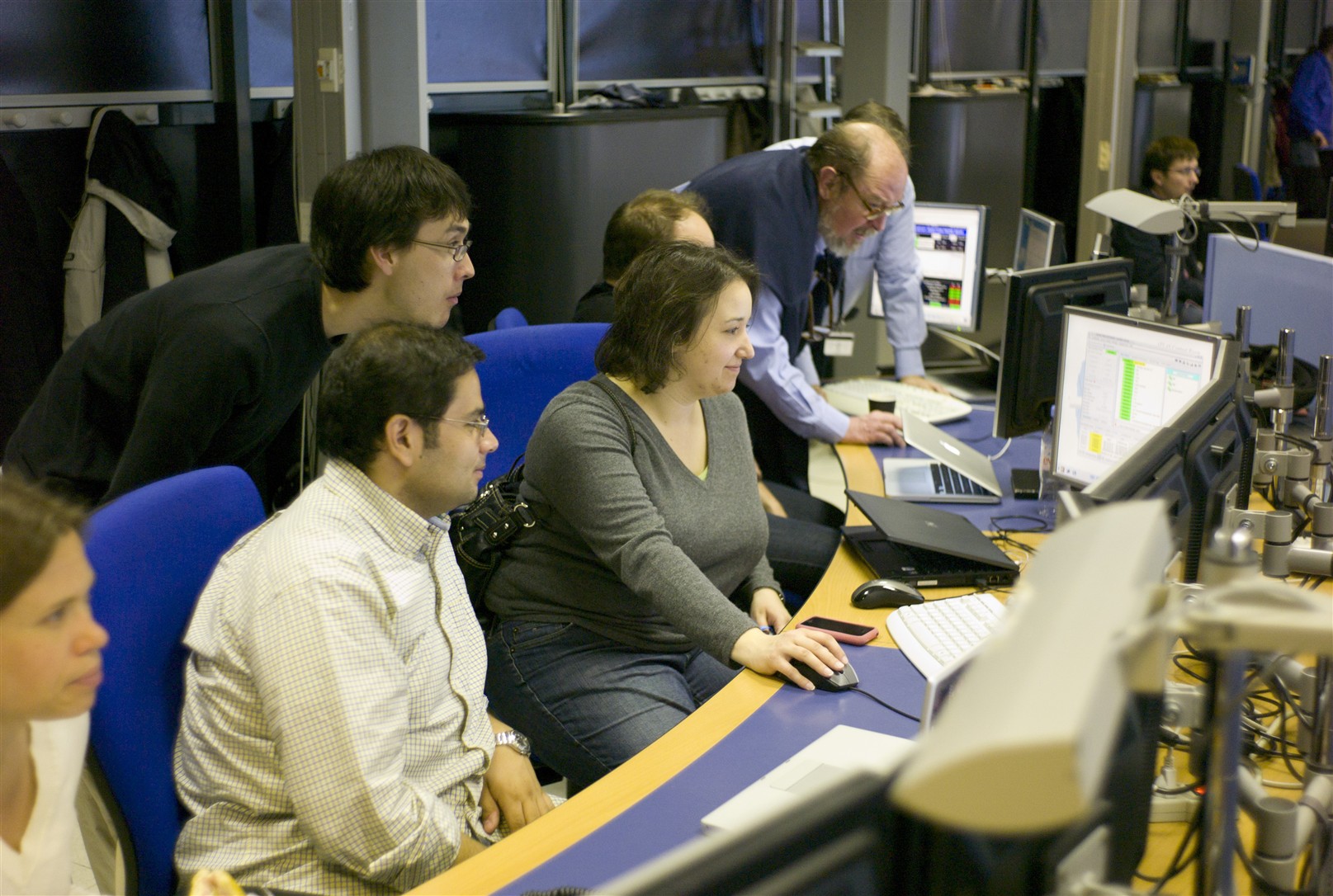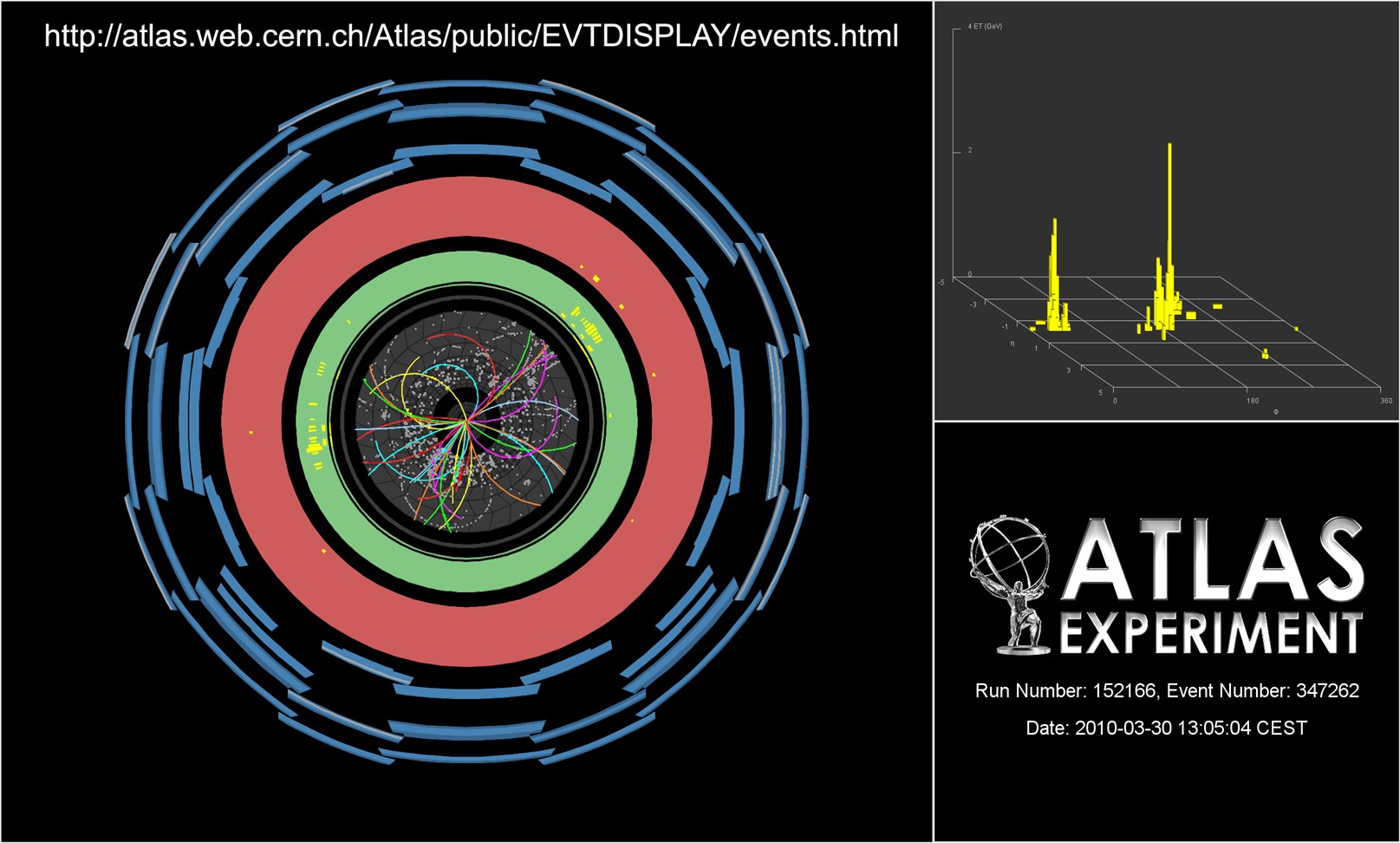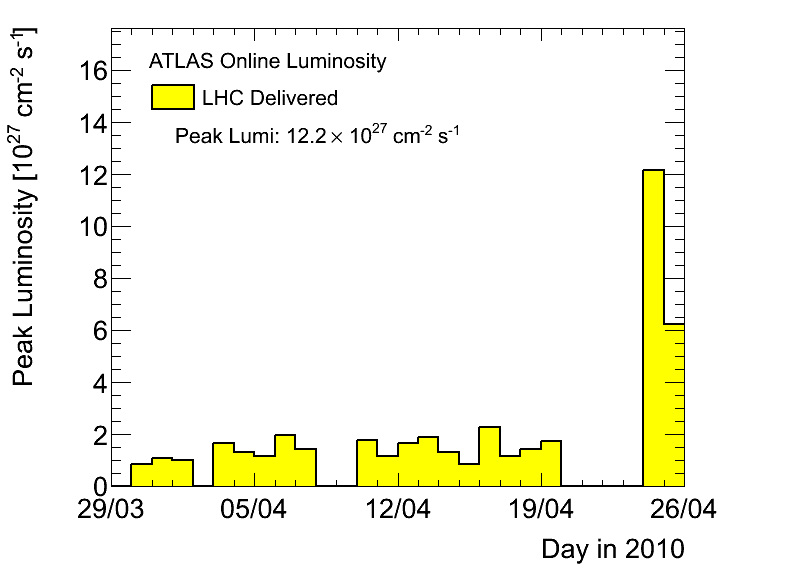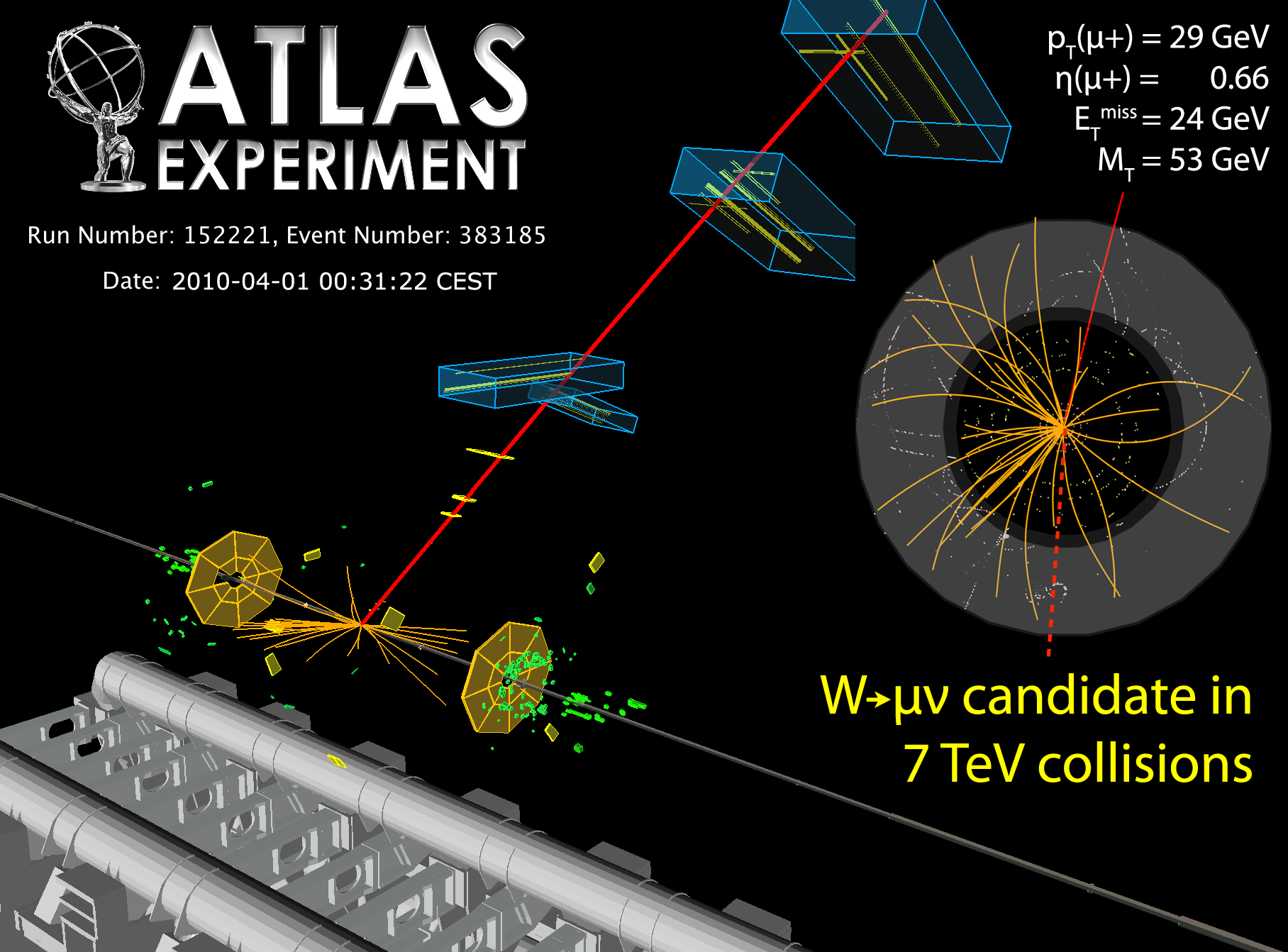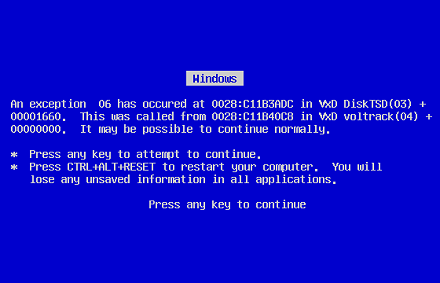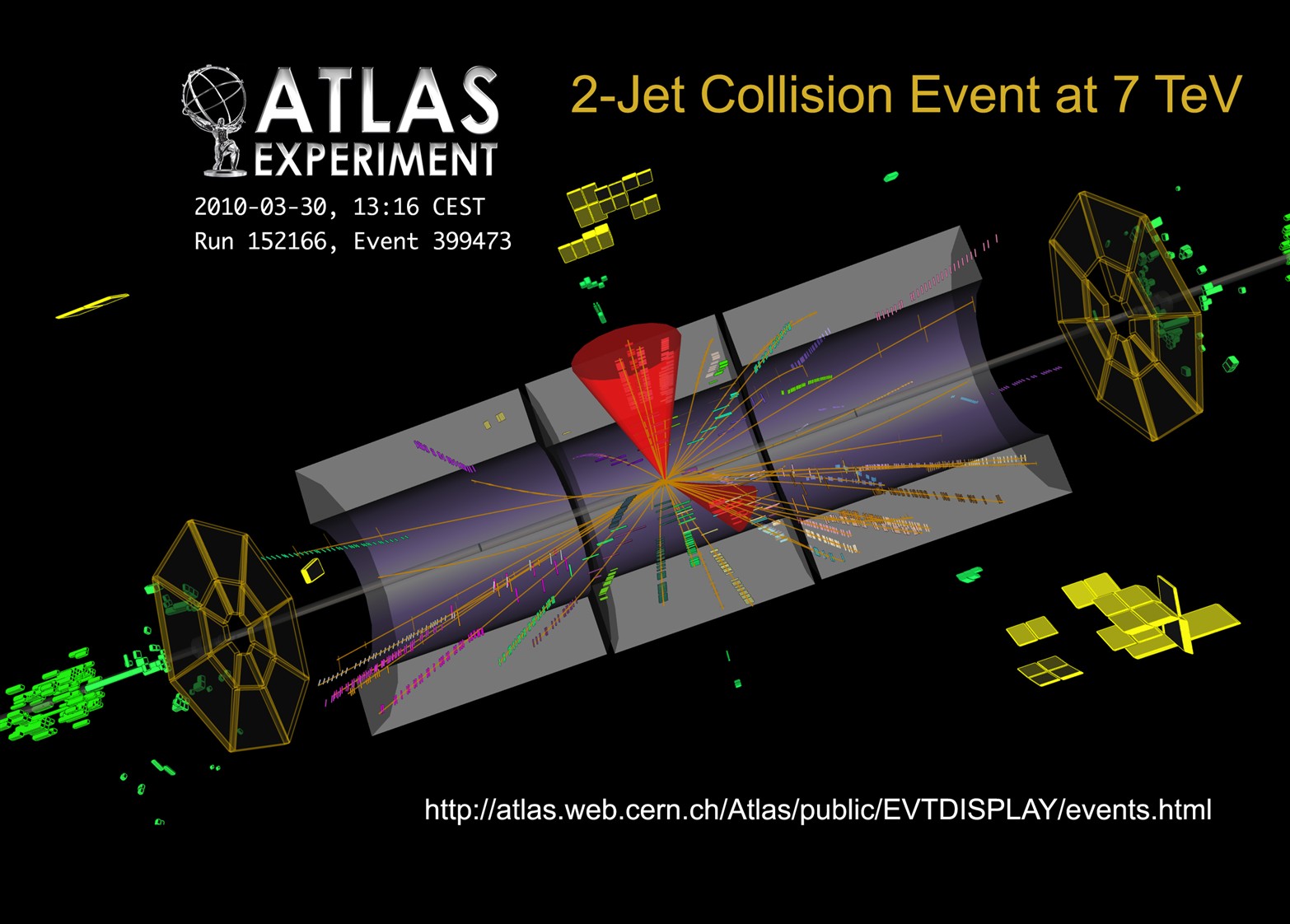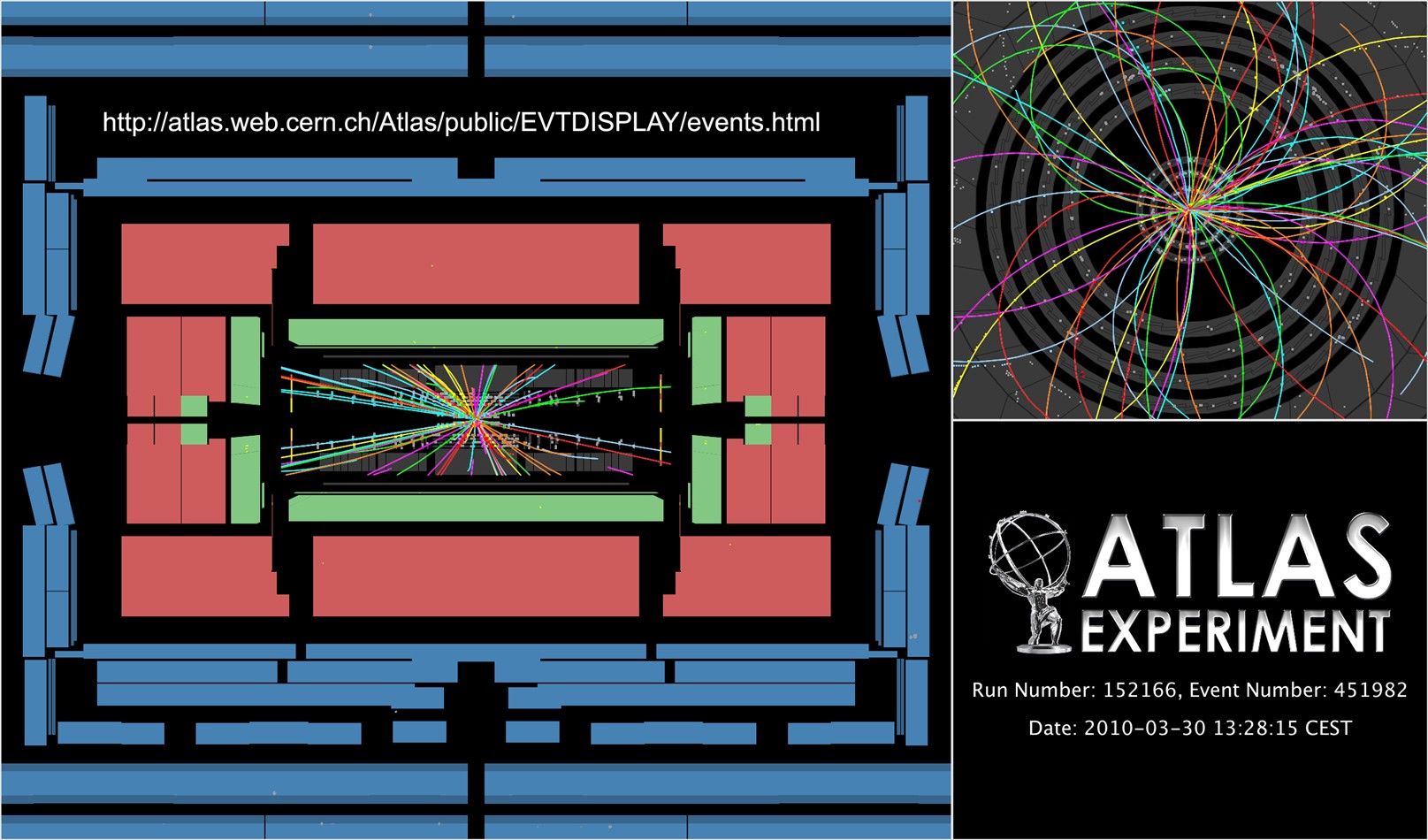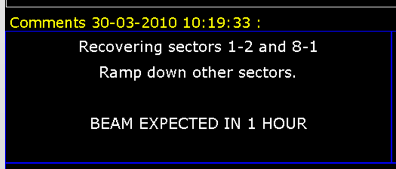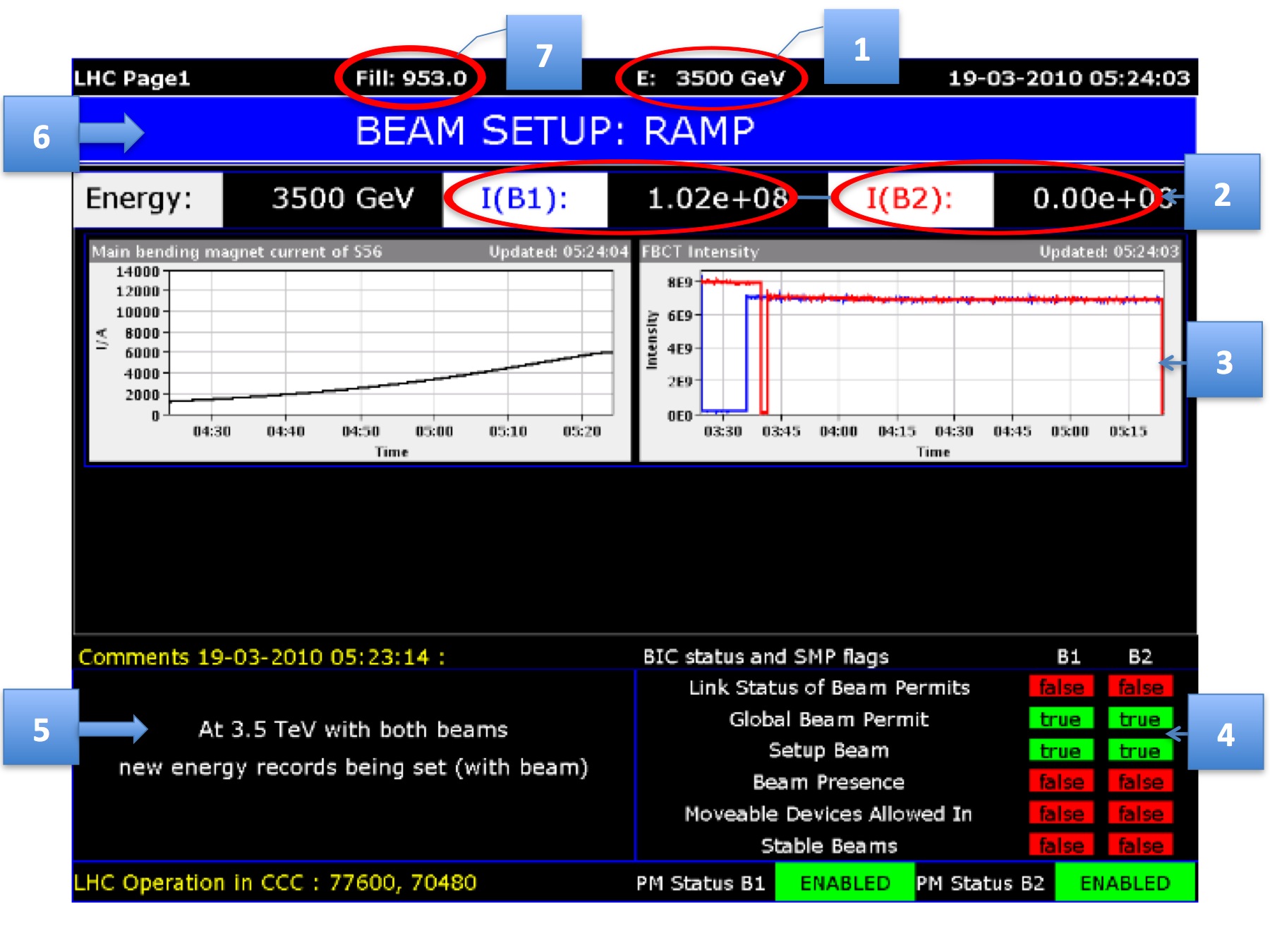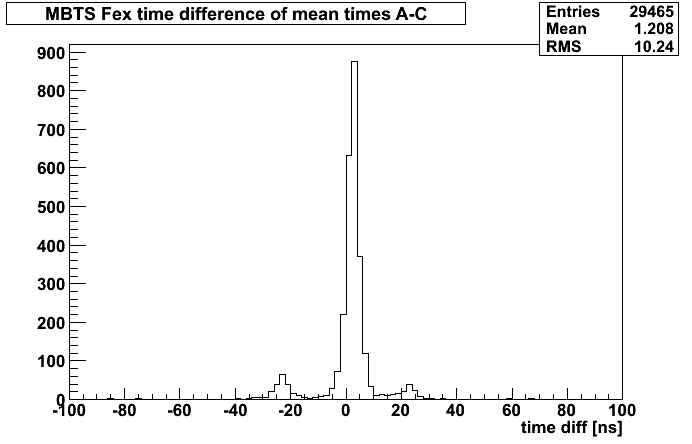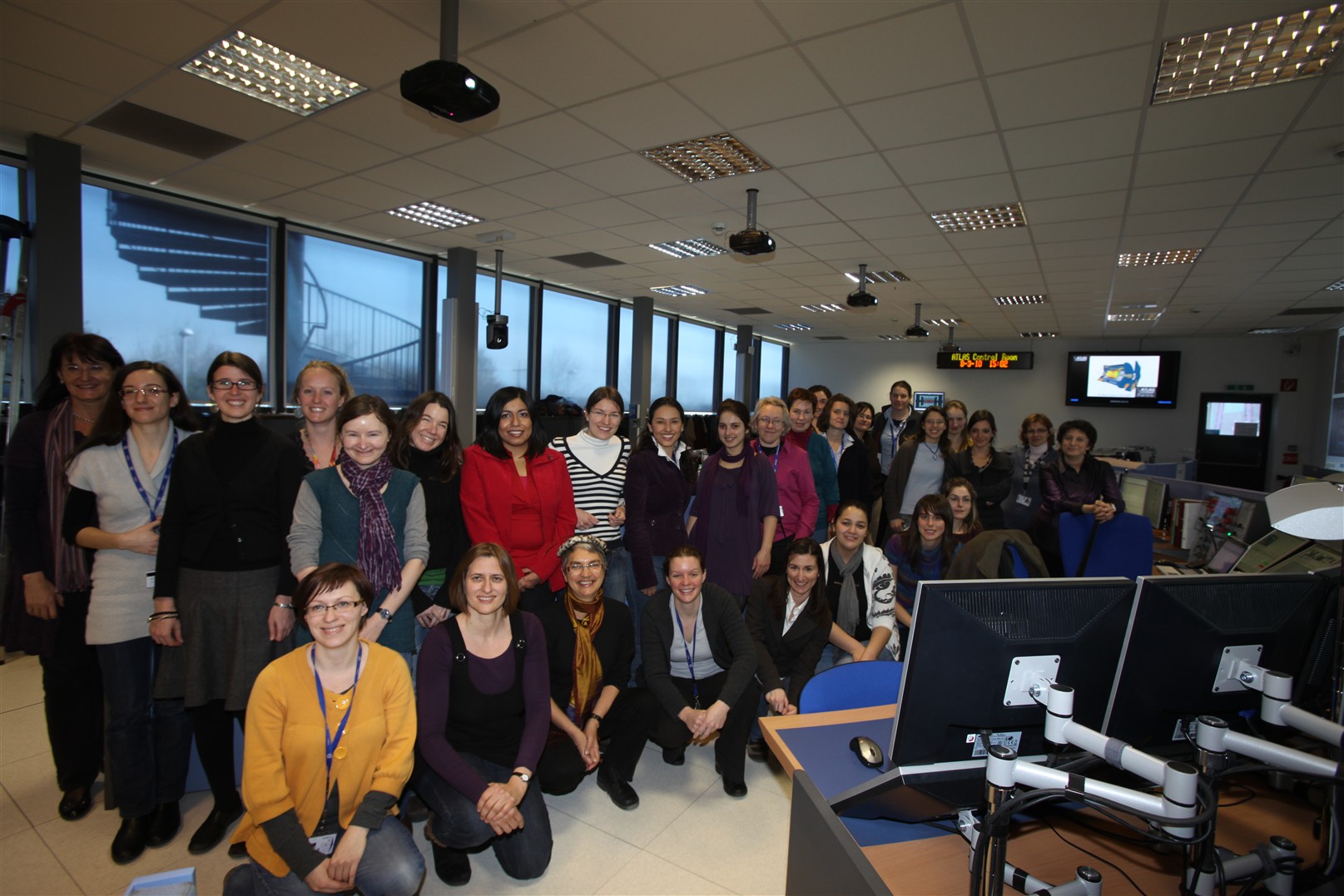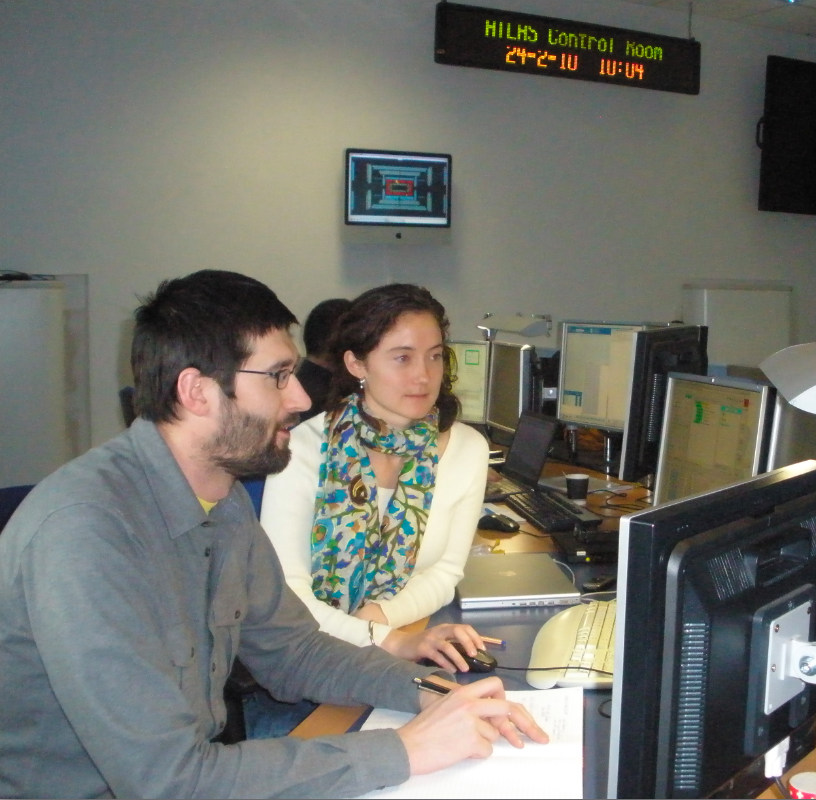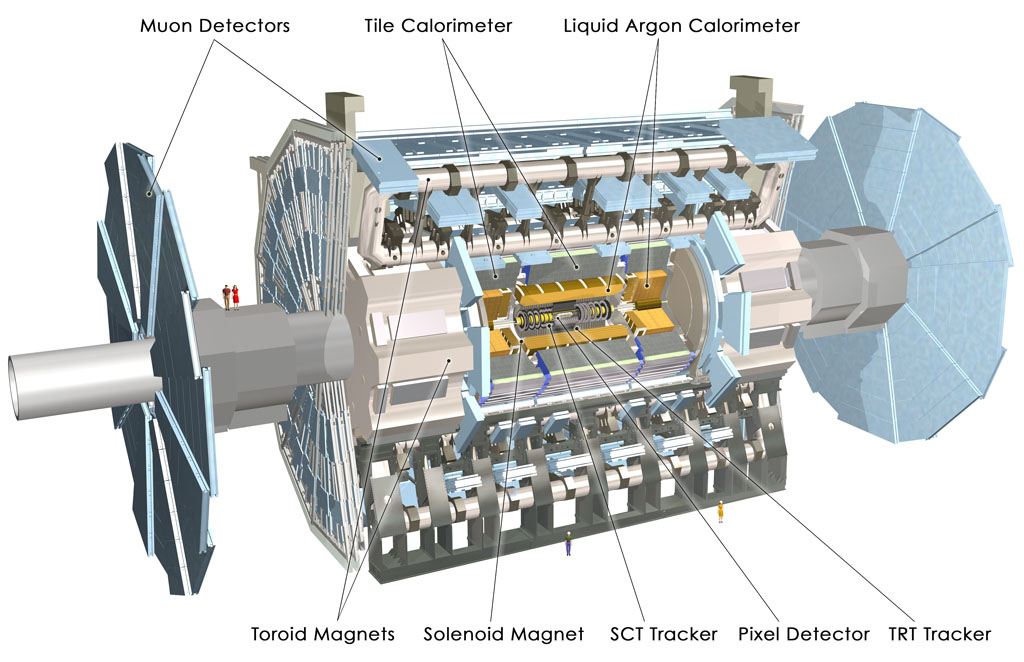Blog
The inverse picobarn threshold has been crossed in ATLAS!
Another milestone has been passed in the long run of ATLAS toward new physics. On Monday August 9, 2010 ATLAS has recorded the first inverse picobarn (pb-1) of 7 TeV collisions. The trend is good and we recently reached the 0.1 pb-1 per day of integrated luminosity (meaning that we can now collect in ~10 days the amount of data we have collected over the last 4 months).
Blog |
ATLAS starting to get on Top of things
ATLAS is about to check one more particle off of its Standard Model (SM) checklist. Namely the top quark. This famous quark is perhaps one of the most complex of the SM particles.
Blog |
Sleepless Nights Lead to First Results of 2010...
Do you hear that? The incessant typing? The coffee machines vending cup after cup? If you go to Building 40, or Building 32, Building 188, or to any one of the many graduate student offices around the world, you will hear the tap of key boards, the whir of disk drives, and even the occasional heated civil discussions with "elevated" voices.
Blog |
Conversations on Shift
When the detector is running smoothly, neighbors in the ATLAS control room sometimes get conversational. A few days back I was on shift, quietly looking at plots on the monitor in front of me, trying to decide if one small sensor was misbehaving or not. “I have a question,” the shifter next to me said.
Blog |
A new record run
In the evening of Saturday May 15, we have reached a new peak luminosity record of 6 1028 cm-2s-1
Blog |
Putting the Squeeze on the Protons
It took a little bit of time, but the wait was worth it. The LHC has successfully achieved its first physics run with "squeezed beams"!
Blog |
One in a few million
ATLAS has been designed to detect rare events in high energy proton-proton collisions. ATLAS ultimate goal is to measure events as rare as one in several thousand billions, but we are modest (for the time being) waiting for the luminosity to rise.
Blog |
Its All About The Lumi!
Now that the LHC has established colliding stable beams at a center of mass energy of 7 TeV, the next step to maximize its physics reach is to provide the most luminosity possible. As Leo posted, we need to increase the number of proton - proton collisions to make sure we have a chance of seeing the physics that we are looking for. The reason for that is because different p.hysics processes have different probabilities. These probabilities are referred to as cross-sections (in a vague reference to the particle's size). If one multiplies a cross section by a luminosity than what you get is a number of events.
Blog |
Life Imitating Reality
I was home sick today, probably from the stress of getting ready for "M-Day" (aka Media Day), more likely though I finally succumbed to the cold that had been spreading through the Control Room. As it so happened, my laptop had been in the shop because it experience an "incident" (actually I just dropped it) last Monday (the week before Media Day), and I just picked it up yesterday.
Blog |
Increasing collision rate
Many collisions will be needed to unveil the secrets eventually hidden at the 7 TeV energy regime.
Blog |
Let The Physics Begin!
After decades of planning. After years of delays and immeasureable amounts of patience and hard work. The physics operations of the LHC has begun!
Blog |
First 7 Tev collisions have been recorded in ATLAS
After ramping of the beams to 3.5 TeV and tuning, final checks, and some emotions due to an unforeseen beam dump, the 7 TeV collisions finally appeared on the on-line monitors of the ATLAS Control Room.
Blog |
Expecting beam in 30 minutes!
During this morning LHC has been working to give us the beam conditions for collisions.
Blog |
How will it happen?
So how will this whole "First 7 TeV Collisions" event happen? Well, here is my (somewhat naive) understanding of what will happen.
Blog |
Approaching the End...and a New Beginning
This Tuesday, if all goes according to plan, will mark the end of a very long journey for many High Energy Physicists. The first 7 TeV Collisions will signal the end of the the commissioning period of the LHC and its experiments.
Blog |
Big step forward in LHC operation last night
Last night a new very important milestone has been reached by the LHC: two counter-circulating proton beams have been accelerated for the first time to 3.5 TeV, the energy that they should routinely reach in the 2010-2011 running period.
Blog |
3 Firsts for ATLAS in 2010
It has been a BUSY weekend! The LHC has been working around the clock get the machine commissioned, and ATLAS has been enjoying the many Firsts that have resulted.
Blog |
ATLAS celebrating the International Women's day!
Today ATLAS celebrates the role of women in physics its own way. ATLAS has encouraged its staff and users to place as many women as possible on shift in the control room and to serve as guides for official visits.
Blog |
A titan awakes
At approximately 2:40 am Central European Time, ATLAS saw particles from the LHC for the first time in 2010. As in previous LHC turn-on periods the first thing we see are beam splashes from the LHC beams as they slowly thread the beam through the LHC ring for the first time.
Blog |
The calm before the storm
The Control Room is quiet. The configurations are set. The trigger menu is uploaded. The shifters are ready. All that is left is for the LHC to deliver beam.
Blog |
Gearing-up for the 2010 run!
ATLAS has been taking cosmic rays data this month exercising new features of the data acquisition, including protocols to start and control the run.
Blog |
First Integrated Run in 2010
Today ATLAS has started the integrated runs. This has happened before, nevertheless this is the first time ATLAS subdetectors get together after the winter break, a lot of work has been done since then.
Blog |
All Bunched Up!
High Energy Physicists have been waiting for many years to see the LHC turn on. Now that it has been turned on, the network of physicists around the world have quickly been harnessed. It can be considered a phase transition in particle physics.
Blog |
Just a taste
At 21:32 pm on December 8th, the LHC did something that no other accelerator has ever done before.
Blog |


